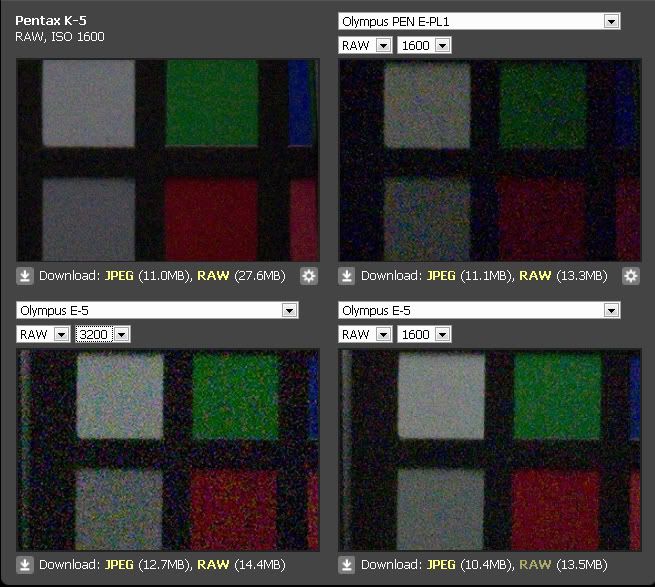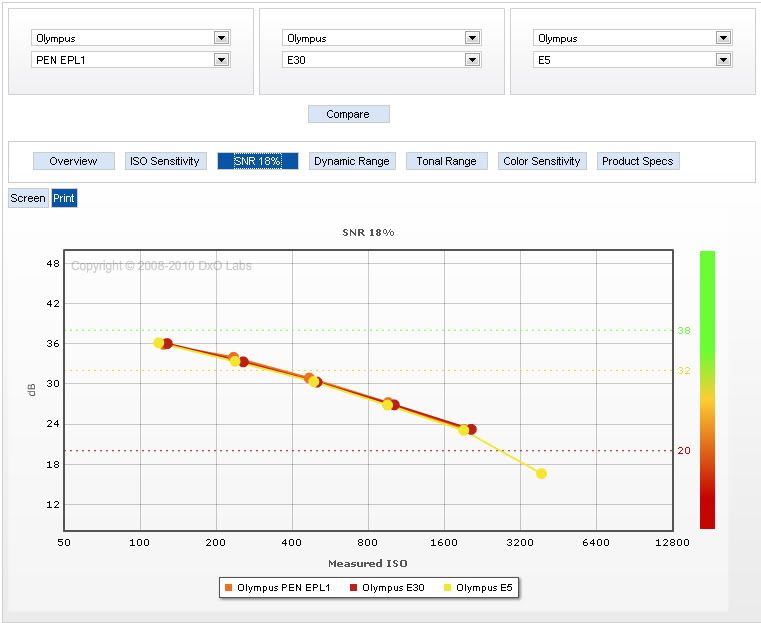http://translate.google.com/transla...43.1-Test_aparatu-Olympus_E-5_Wst%C4%99p.html
After DXo came forward with the Olympus E-5 measurements, many could not believe the results and some others blamed Dxo as unreliable/bad/whatever.
Turns out yet another review (linked above) validates what DXo found checking RAWS and most importantly- comparing them with the E-30 and E-5.
RAW shooters beware: you are getting pretty much the same E-30 DR/noise performance with a little more detail at high iso (and noticeably more detail at low iso). If you are a high ISO shooter and heard that the E-5 has like one more stop DR, that probably came from some JPEG to JPEG engine comparisons, which doesn't show the potential of the camera for you.
For a jpeg shooter of course this is a nice advantage. the E-5 JPEG engine is really nice, but certainly there's only so much you can do with the original data. I think Olympus does superb with it though (JPEG).
The review pretty much validates DXo's results.
- Raist
After DXo came forward with the Olympus E-5 measurements, many could not believe the results and some others blamed Dxo as unreliable/bad/whatever.
Turns out yet another review (linked above) validates what DXo found checking RAWS and most importantly- comparing them with the E-30 and E-5.
RAW shooters beware: you are getting pretty much the same E-30 DR/noise performance with a little more detail at high iso (and noticeably more detail at low iso). If you are a high ISO shooter and heard that the E-5 has like one more stop DR, that probably came from some JPEG to JPEG engine comparisons, which doesn't show the potential of the camera for you.
For a jpeg shooter of course this is a nice advantage. the E-5 JPEG engine is really nice, but certainly there's only so much you can do with the original data. I think Olympus does superb with it though (JPEG).
The review pretty much validates DXo's results.
- Raist



